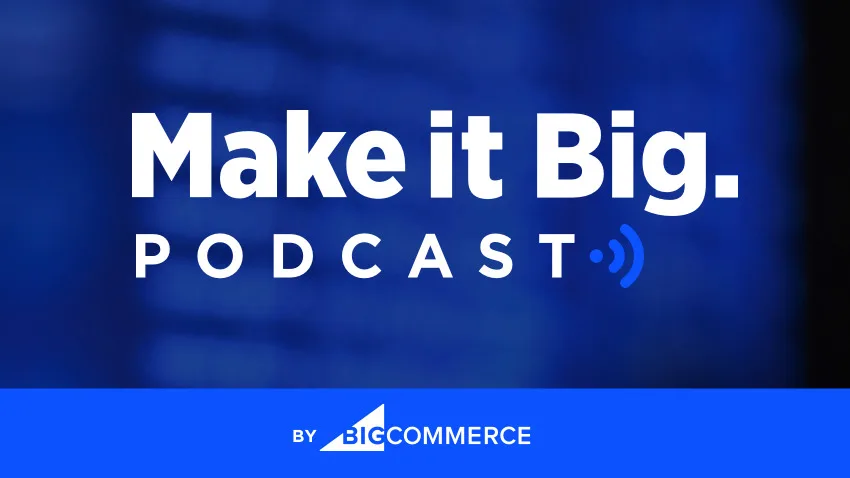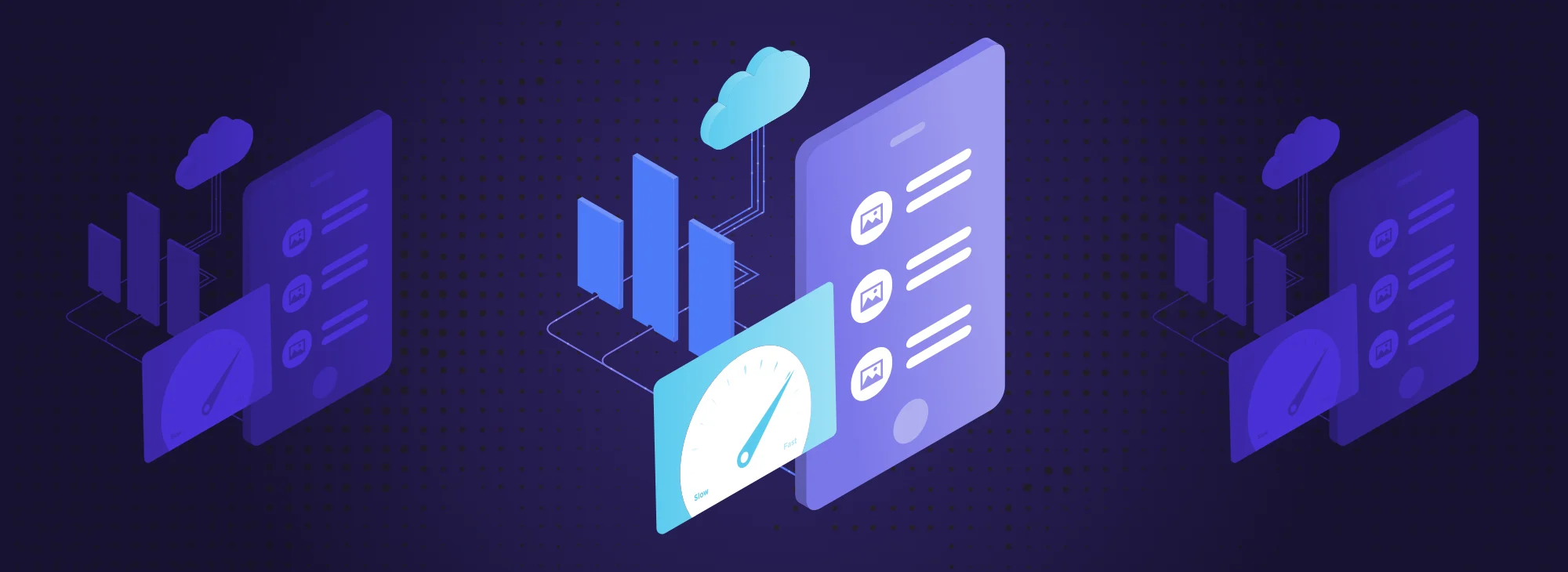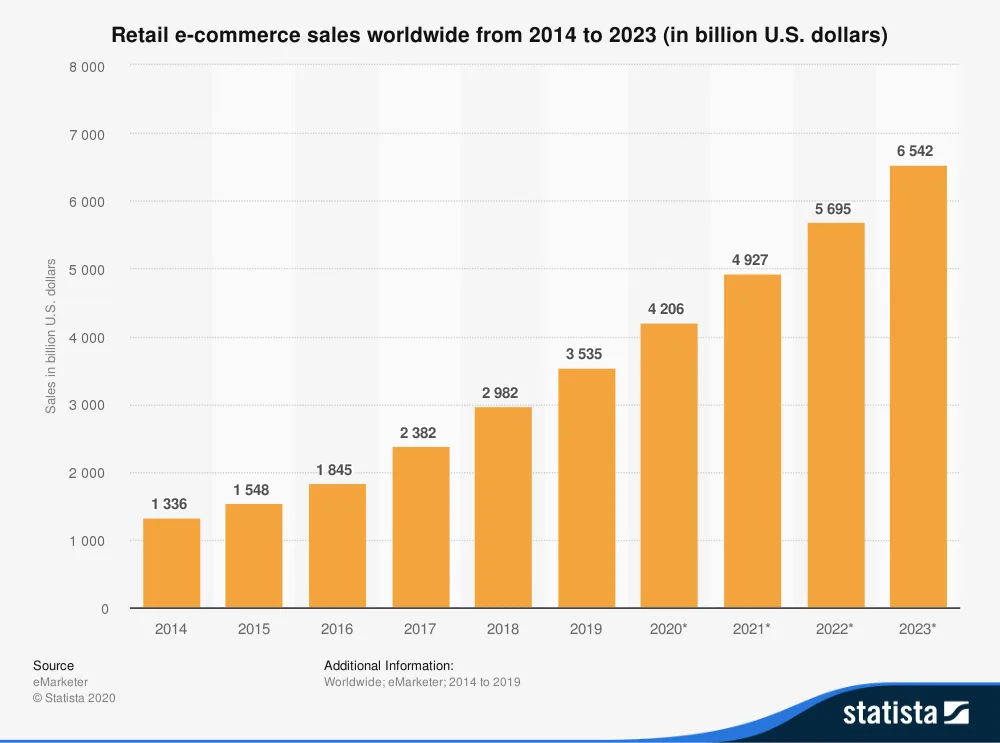
Ecommerce insights on the go
Tune in to the Make it Big Podcast — our thought leadership audio series for retailers, entrepreneurs and ecommerce professionals. You'll get expert insights, strategies and tactics to help grow your business.

Ecommerce Demand Forecasting: Get it Right & Leapfrog Your Competition


Ecommerce Demand Forecasting: Get it Right & Leapfrog Your Competition
Get The Print Version
Tired of scrolling? Download a PDF version for easier offline reading and sharing with coworkers.
A link to download the PDF will arrive in your inbox shortly.
There’s a lot about ecommerce that’s complicated. An ecommerce business must be agile, and its decision-makers switched on to succeed. When you get right down to it, though, the heart of online retail remains simple.
Strip everything else away, and selling is still selling. It’s all about having what a customer demands when they want it and getting it to them. That straightforward premise is at the core of what is now a vast global ecommerce market.

But how do you know what consumers want? And, more importantly, what might they demand next week, month, or year? Ay, there’s the rub, as Shakespeare might say. It’s also where ecommerce demand forecasting comes in.
Read on, and you’ll learn all you need to know about ecommerce demand forecasting. We’ll cover what it is and how it works. Then, we’ll discuss areas of your business, like inventory management and warehousing, that demand planning can support.
To help you get demand forecasting right, we’ll talk about its challenges and variables. Finally, you’ll get a step-by-step guide covering how to forecast demand. As well as the broad retail tech trends to take advantage of when doing so.
What is Demand Forecasting?
Ecommerce demand forecasting is the process of predicting the future demand for products. That could be new products or those that you’ve been selling for years. The best way of forecasting demand is by using historical data.
You can ID patterns and trends by raiding your order management system or other sources for sales data. From those, you can estimate future sales and how they may fluctuate. Getting ecommerce demand forecasting correct is essential for businesses in the niche.
Only through accurate data analytics and decision making can a firm maintain the correct stock levels. Achieving that is critical for keeping a healthy bottom line. We’ll talk more about that later. First, let’s delve deeper into the different types of demand forecasting.
Types of Demand Forecasting
In general terms, demand forecasting is about using historical sales data to predict future sales trends. You can categorize forecasting models, though, by different factors. They include time scale, scope, and more. As such, the following are four common varieties of demand forecasting:
1. Macro-level.
Macro-level demand planning puts forecasting in the broadest possible context. It’s a demand forecasting method that looks at the market in which an ecommerce business exists. That means it needs market research and is most appropriate for firms with certain aims.
That may be companies looking to launch new products or target a new market segment. For instance, say the audio brand, Skull Candy, wanted to branch out into clothing. They’d need to perform macro-level demand forecasting. That’s how they’d get their inventory planning and supply chain management correct.
2. Micro-level.
As the name suggests, micro-level ecommerce demand forecasting is the opposite of the above. It’s when a firm drills into its own operations for sales forecasting and planning.
There are many things an ecommerce business may consider here. They include:
Past sales performance of product categories and individual lines (by SKU).
Profit margins achieved on different items.
Cost of production and cash flow considerations that may impact inventory planning.
3. Short-term.
Forecasting demand is always about looking to the future. How far, though, is up to the brand doing the forecasting. Short-term demand planning usually limits predictions of sales trends to the next 3-12 months. If you forecast demand in this way, you’re typically looking to learn about seasonality. That’s how product demand changes by time of year.
The National Baseball Hall of Fame’s online store, for instance, would likely see more sales during baseball season. Would purchases spike more, though, during the World Series? Or is the sweet spot the week after the regular season gets underway? It’s these types of questions that short-term demand forecasting can answer.
4. Long-term.
Long-term ecommerce demand forecasting is the most comprehensive variety. It utilizes data analytics to ID demand patterns for the next 12, 24, or even 48 months. This far-reaching demand planning feeds into broader business strategy.
Patterns in sales data, for instance, might suggest new sales channels to adopt. It could also reveal that a brand may need to change its supply chain fundamentally. The trends may, for example, predict a sharp spike in customer demand for a particular product. Present suppliers, as a result, may not be able to provide the inventory levels required.
How Does Demand Forecasting Work?
Demand forecasting involves predicting trends in sales and customer demand. The premise is that with prior knowledge of sales trends, a firm gets a jump on its rivals. They can, for instance, boost inventory levels of a product to avoid suffering a stockout.
We’ll talk more about ecommerce forecasting’s benefits for inventory management later. For now, let’s consider precisely how it works. In short, it’s by either qualitative forecasting or quantitative data analytics.
The qualitative method looks at the broader economic environment to create forecasts. You may consider any of the following:
Market research – target audience surveys, etc.
Industry expert’s opinions
National or global economic circumstances – recession, etc.
Quantitative forecasting leans more on hard data. It’s the type of planning that develops a trend projection based on prior information. That typically means looking at sales data or website analytics and finding patterns. Can you extrapolate from sales of an individual SKU, for instance, that sales will rise sharply? As a result, do you need to change your inventory management?
Demand Forecasting Can Help Ecommerce Stores
So, now you know what ecommerce demand forecasting is and how it works. We’ve also touched a little on how it benefits an ecommerce business. It’s advantages, though, are diverse and well worth some further attention.
1. Helps reduce financial risk.
One of the main benefits of accurate forecasting is that it provides a basis of evidence for your budget. If you can understand changing customer demands, it improves your financial decision making.
For example, historical data may tell you to expect new products to take a while to start selling in high volume. When you launch a new line, then, you’ll know to spend a little less on inventory. That, as a result, reduces the risk of getting left with dead stock.
2. Provide customers with products when they want them.
Modern consumers have more choice than ever before and are savvy and demanding. They know what they want, and they often want it right now. If you can’t deliver, one of your rivals will. Ecommerce demand forecasting ensures you’re not left in that situation.
Knowing product demands and how they fluctuate keeps you ahead of the curve. You can boost your inventory level before replenishment would generally occur. Your inventory planning, after all, gets based on future customer demand. All predicted by your forecast.
3. Decreases inventory expenses.
Ideal inventory management is when you have precisely the right amount of stock at all times. Too little, and you risk disappointing customers. Too much, and your inventory and warehousing costs can spiral. Warehouse space isn’t cheap, so you must use it as efficiently as you can.
Get ecommerce demand forecasting right and your warehouse management system benefits. You’ll have the right amount of stock on hand, after all, to meet requirements. That means no wasted space and no slow-moving stock wasting space. Robust inventory forecasting, too, could help you find new warehousing methods to cut costs further.
4. Create a pricing strategy that reflects demand.
Other areas of operations benefit from effective demand forecasting, too. Take pricing strategies as an example. One of the most critical factors in choosing such a strategy is the demand that exists for a product. You can charge more, after all, for items in higher demand.
Get sales forecasting correct, and you can tweak your pricing strategy to match.
Challenges that Face Ecommerce Demand Forecasting
Nothing that’s worthwhile in business – or life – is entirely straightforward. Demand forecasting for an ecommerce business is no exception. The following are a pair of significant challenges that you may face.
1. Applying the wrong methodology.
We’ve spoken at length about the different demand forecasting methods. Choose the wrong one, and your predictions are worthless. You need to take a step back, therefore, and assess your options. The following are three common ones:
Expert Opinion – Gather insights from industry experts on the market in which your business operates.
Collective Knowledge – Ask all your sales team members for their input on product performance, sales trends, and more.
Time Series Analysis – Using historical data to make predictions. For instance, you may find purchases of a product spiked around Black Friday for the last two years. You could then conclude that sales will rise again around the same time.
2. Leveraging incomplete data to make decisions.
Even with the right forecasting model, your predictions may fail due to incomplete data. This is particularly true if you adopt a quantitative forecasting method. For such processes to work effectively, you need as much accurate information as you can get.
For instance, if you can’t collect real-time data on sales or inventory, your conclusions may be out of date. In the same vein, if you’ve only got sales figures from the past month, you can’t make informed decisions.
Fortunately, in this era of big data, incomplete information is less of an issue. Every ecommerce business now has the chance to capture info from many channels. That’s crucial, as the more extensive the data set, the more effective the conclusions which you can draw from it.
Variables that Impact Ecommerce Customer Demand
You might be wondering at this point just how much customer demand for products can change. Is it really that critical to forecast any changes in demand? Will it genuinely make that much difference? The answer to those questions is yes. And it’s yes because of the many variables that impact ecommerce customer demand.
1. Location.
One of the best things about ecommerce is that a brand can serve customers across the globe. Where consumers reside, though, will affect their demand for products. People from different nations and cultures have varied needs and expectations. A line that’s popular in one country may get no sales at all, across only one border.
2. Seasonality.
Seasonality is another factor that makes a massive difference to product demand. Significant events – like Black Friday – often generate a need or desire for products that doesn’t exist at other times of year. It’s a good idea for ecommerce businesses to draw up a retail calendar to keep track of such events.
3. Types of products.
The goods you sell can also impact customer demand. Say, for instance, you sell high-priced luxury items. There will be less repeat custom in that niche. As such, product demand will be more unpredictable. It could, therefore, be trickier to forecast demand effectively.
4. Competition.
How competitive your marketplace is will also impact customer demand. If a new rival enters the field, for example, they may siphon off some of your customer base. Your product demand, therefore, will fall.
It doesn’t even have to be something as drastic as a new firm opening. Perhaps a competitor runs a terrific video marketing campaign. If it really catches the imagination, it could win your customers over. You would then see lower product demand. That would impact your decision making as regards inventory management, cash flow, and more.
Steps for Demand Forecasting in Ecommerce
The above should have convinced you of the importance of demand forecasting. For ecommerce businesses, it’s as vital as a SaaS marketing strategy is for firms in that niche. How, though, can you start forecasting demand more accurately? The following are a few straightforward steps to get you started.
1. Identify goals.
As with many business processes, the first step to excellent demand forecasting is planning. Before you start collecting or analyzing data, you must know what you want to achieve. Set timeframes for your forecasting and devise the questions you want to answer. Examples may include:
What volume of particular products will we sell?
Will demand for certain lines fluctuate over time?
What events or external factors could influence demand?
Might changing consumer expectations affect sales?
If demand shifts significantly, will our commercial infrastructure cope?
Once you’ve identified your goals, get buy-in from all your stakeholders. Ensure your sales team, social media marketers, and decision-makers agree you’ve covered all bases. Then, you can start forecasting demand in earnest.
2. Collect and record data.
We’ve already discussed that more data leads to more accurate forecasts. Whatever demand forecasting method you use, then, you must gather as much information as you can. There are loads of ways to collect insights and hard figures.
Remember at this stage that internal and external factors influence product demand. As such, you’ll want to gather historical sales data and information from beyond your organization.
The former should be easy enough to source from your CRM or order management platform. For the latter, you could perform your own market research or lean on existing reports and surveys.
3. Measure data.
With your data at hand, you need to use it to draw conclusions. That means analyzing your results to find patterns and trends. It’s possible to do this manually, but that’s only viable for smaller firms.
When you have lots of diverse data, your best option is to lean on a data analytics platform driven by AI. Such solutions can utilize machine learning to derive insights from your data swiftly. Remember not to rely wholly on tech, however. Use your experience and nous to interpret the insights you gain intelligently.
4. Make adjustments.
You’ve collected your data and found illuminating patterns. So, what’s next? Well, that would be the part of the process that actually delivers the benefit to your business. It’s where you make adjustments to business operations in line with your forecasts.
Say, for example, that you forecast falling customer demand for a particular item. You could then adjust future purchase orders to put fewer of those products into stock. Alternatively, you might discover that a product has a highly seasonal life cycle. You could then decide only to stock it at the relevant times of year. That way, the inventory doesn’t clog up your warehouse when it’s not needed.
Conclusion
People in charge of decision making at ecommerce businesses have to wear lots of hats. They must be marketers, salespeople, and accountants. When it comes to demand forecasting, you could also add soothsayers to the list.
Ecommerce demand forecasting, after all, is all about predicting the future. Get it right, and you can tailor your operations to meet customer needs perfectly. It’s that kind of service that modern consumers demand.
Add to that the fact that forecasting demand delivers a raft of other benefits, and you’ll see how essential it is. So now you know all you need about the process, it’s time for you to get started – no crystal ball required!

Nick Shaw is the Chief Revenue Officer (CRO) of Brightpearl and is responsible for Global Marketing, Sales and Alliances for the leading retail inventory management software provider. He has written for sites such as Hubspot and G2.


